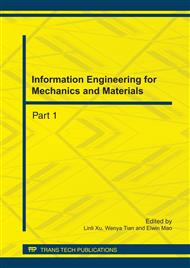p.27
p.32
p.36
p.40
p.46
p.51
p.55
p.60
p.64
Modeling on Laser Cladding on In718 Superalloy
Abstract:
A 3-D modeling based on the numerical resolution of fluid flow and heat transfer for laser-cladding processes of In718 Superalloy is proposed. The implementation of developed procedures allowed us to treat the problem with specific and complex boundary conditions. The applied loading is a moving heat source that depends on process parameters such as power density, laser beam diameter and scanning speed. The effects of process parameters on the melt pool are quantitatively discussed by numerical analysis. The computational results present good coincidences with the corresponding experiments of laser cladding process.
Info:
Periodical:
Pages:
46-50
Citation:
Online since:
July 2011
Authors:
Keywords:
Price:
Сopyright:
© 2011 Trans Tech Publications Ltd. All Rights Reserved
Share:
Citation:


